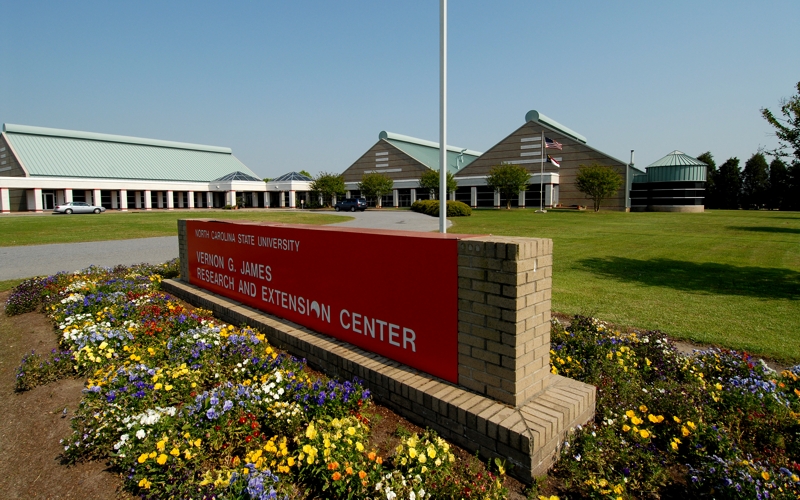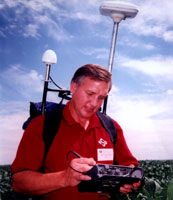
This is part of a series of special reports by Catherine Kozak, who attended the COP26 climate conference held in November.
PLYMOUTH — As warnings about the need to immediately and drastically cut carbon emissions were blaring full volume at November’s 26th United Nations Conference of the Parties, or COP26, climate summit in Scotland, talk of carbon markets suddenly filled airwaves and the Internet sites. And agriculture was named as the logical vehicle to sell carbon credits.
Supporter Spotlight
Carbon trading has been around since 2005 as a way to reduce greenhouse gas emissions and mitigate carbon’s effect on global warming, but it’s grown in fits and starts. As authorized by governments, an entity would be allowed to emit an agreed-upon amount of carbon dioxide in exchange for credits that had been purchased — say, from a farmer — to offset the carbon pollution. Rules for global carbon trading were formalized at COP26.
Ronnie W. “Ron” Heiniger, associate professor at North Carolina State University and professor and cooperative extension corn specialist at the Vernon G. James Research and Extension Center in Plymouth who has worked with farmers in the region for 28 years, recently elaborated on the labyrinth facing farmers in figuring the value of carbon credits, while they’re contending with numerous other climate challenges.
Corn and other crops absorb tremendous amounts of carbon dioxide, he told Coastal Review. Satellite images of eastern North Carolina in the summertime show that the carbon dioxide levels in the atmosphere above its farm fields go down quite dramatically as the crops absorb the greenhouse gas.

“And you would think that was a great deal,” Heiniger said. “The problem, of course, is that we lose some of that CO2 that was absorbed into the plant. As the plants decay, they release some of that back into the atmosphere.”
Also, with tilling, the microbes in the soil survive by eating organic molecules, and they release carbon dioxide, he said. “They have to respire, just like human beings.”
Supporter Spotlight
Plus, a lot of the soils in the region are peat, which can be 50% carbon.
“Anytime you disturb those, some of the carbon is released,” Heiniger said. “So the issue here is how do we get this carbon that we captured in this crop to stay in the soil.”
With more talk of sequestering carbon, and no-till methods and cover crops, which can encourage a longer growing season, and fewer fallow or bare fields, the concept of selling carbon credits to offset things like oil and gas projects is a possibility. But, he said, it’s not only farmers who are skeptical, so are researchers at N.C. State.
“We’re concerned about this concept of carbon credits because we want to make sure what you’re getting paid for is actually happening,” he said. “The issue is the science needs to be better developed for how much carbon is sequestered and what practices are best for doing it. Those issues still remain to be answered from this mitigation side.”
Cover crops, which involve seeding fields with some kind of grass as a crop is being harvested, with the goal of growing biomass to cover the land. But the practice also creates conundrums. Although it can keep down the need for herbicides by suppressing weeds, as well as protect soil, the cover has to be removed when planting season returns. And the way it’s removed is through chemicals — or plowing it into the soil.
Heiniger said that records over the years reflect a steady increase since the mid-1990s in the number of days at or above 95 degrees, and changes in insect populations and the types of insects that affect crops. There is also increased saltwater intrusion in some low areas. Some of the saltwater is coming up from the groundwater, which presents an even more difficult situation than that coming in from the canals that can be blocked or flushed.
But the rain has become a huge headache.
“The intensity of these storms — that definitely has caught our attention, Heiniger said. “We get more of these 6-. 8-, 10-,12-inch rainfalls than we did close to 30 years ago, when I started here.”
Floodwaters are staying in fields for longer times, suffocating crops.
“And as I tell farmers, when your soil is saturated, that means there’s no oxygen in there,” he explained. “It’s like being in a drought because basically the crop can’t take up water, even though it’s sitting in water. So, it can’t cool itself. It’s basically like you’re in a desert then.”
Heiniger said that the drainage systems — pumps and canals — are critical infrastructure to farmers, although public funds are not provided to maintain them.
Changes in the climate converging with growing resistance to pesticides have led to an increasing problem with stinkbugs, which are better suited to warmer temperatures, he said. And there has been increased damage from bugs in corn, soybeans and cotton.
Heiniger said that corn is the largest crop in northeastern North Carolina by acreage, followed closely by soybeans and cotton a distant third.
Much of the corn grown in the region is used to feed livestock, which provides a more favorable economic return, he explained. The type of corn has also been bred to be more stress-tolerant.
The skyrocketing cost of fertilizer is leading farmers to switch to growing more soybeans, which require less nitrogen, Heiniger said. They also take steps to conserve fertilizer, using less of it, changing the timing and increasing the root system.
As a result of rising costs, he said, farmers will plant less corn, so there will be less corn in the market, and prices will be higher.
Since the 1960s or so, farms in northeastern North Carolina were generally larger than the rest of the state, and they’ve gotten bigger over time. Equipment costs have also gotten bigger — a combine can run about a half-million dollars.
“It’s like owning a beach house,” Heiniger said, chuckling. “You’ve got to get bigger to make that pay.”
Most of the small farms on the sand ridges that had been farmed since the 1600s have been consolidated now into bigger farms, or they’re leased or managed by big farms. But whatever the size of the farm, mitigation methods, including no-till and cover crops, are very early in the development stage.
“Not that we haven’t done cover crops, or that we haven’t done no-till, it’s just that we haven’t put together a system that tries to use all of these to do this,” he said.
Although cover crops can save money otherwise spent on herbicides, the technique is regarded as uneconomical because a farmer is planting something that can’t be harvested. But carbon credits would have the potential to compensate farmers to plant cover crops.
Heiniger said it would probably take up to five years for scientists to develop a strategy that promoted the maximum amount of carbon being returned. Typically, it takes at least three years of ground studies to confirm a practice as viable, and then another couple of years to introduce it to farmers or growers.
N.C. State has started programs looking at cover crops and reduced tillage systems, but more information on carbon sequestering requires soil sampling, testing and data analysis — and the money to do the work.
“We need more funding if we’re going to make progress,” he said. “As you see, agriculture is the linchpin here. They could talk all they wanted on TV about how they’re going to be climate neutral. They’re depending on these credits, and agriculture is it.”
Is agriculture able to participate yet in carbon markets?
“The answer is no,” Heiniger said. “Right now, we’re not ready.”
Once the wrinkles are smoothed out, he fully expects that farmers will be willing participants, including those who are climate change skeptics. It’s the “doomsday scenarios” mixed in with the science that puts them off, he explained. That and unrealistic talk about such fantastical things as electric tractors, which could not — at least with current technology — provide the concentrated power that’s necessary to run such heavy equipment.
“Farmers know climate is changing,” he said. “Farmers understand we adapt, you figure out how to get it done, you mitigate, you find systems that cool the crop or reduce that runoff area and get that water off quicker. You find ways to solve those problems.
“I think that’s what hurts the climate change thing, is that we end up talking about things that are speculative rather than concrete,” Heiniger said. “Farmers see the environment — they don’t talk about it. They farm it.”








